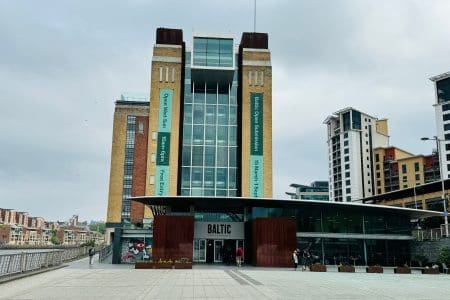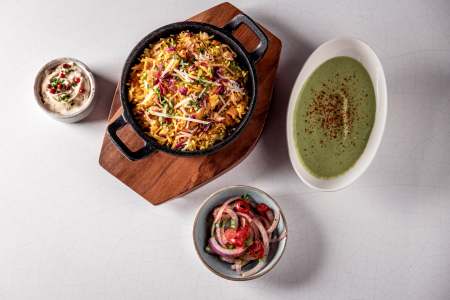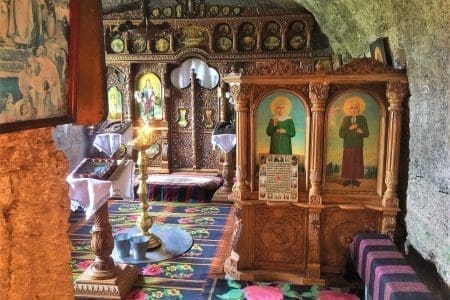Roger Hermiston and Eileen Wise stay at The Kensington hotel in London and take in the Chanel Exhibition at the V&A.
The Irish are surely the perfectly-equipped hoteliers. The national character is gregarious, loquacious, epicurean, and it has been our fortune to have witnessed all these traits while enjoying stays at several of the hotels in the family-run, Dublin-based, Doyle Collection.
We had already sampled two of Doyle’s luxury London hotels, The Bloomsbury (elegant) and the Marylebone (buzzing), so now we turned our attention to the third sister, The Kensington on Queen’s Gate in South Kensington, situated conveniently in museum land with the Natural History, Science and V & A just a short walk away.
The Kensington
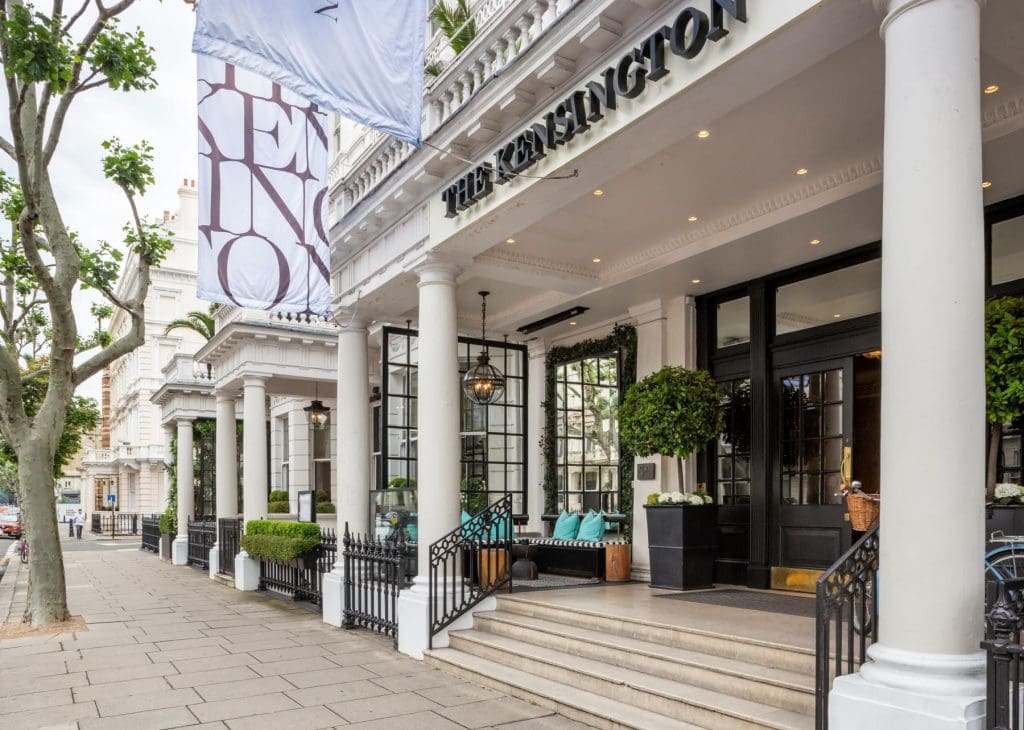
We arrived outside The Kensington’s wide (it occupies five Georgian townhouses), grand, white stucco façade drenched and chilled to the bone, having been caught in a downpour while towing our suitcases from the tube station. But as we walked up the steps into the large columned porch the warmth of the welcome from doorman, concierge, and then Michael at reception, soon thawed us out and we quickly began to relish the pleasures of a warm establishment whose ambience lies somewhere between a country house hotel and a gentleman’s club.
The Kensington has 150 rooms and suites, ranging from the Cosy Rooms – designed for single travelers – up to the signature Knightsbridge and Kensington suites. Our haven for the next two nights was a Luxury Studio Suite on the second floor which had a splendid view out over busy Queen’s Gate, but was remarkably quiet because of the double (or triple) glazing.
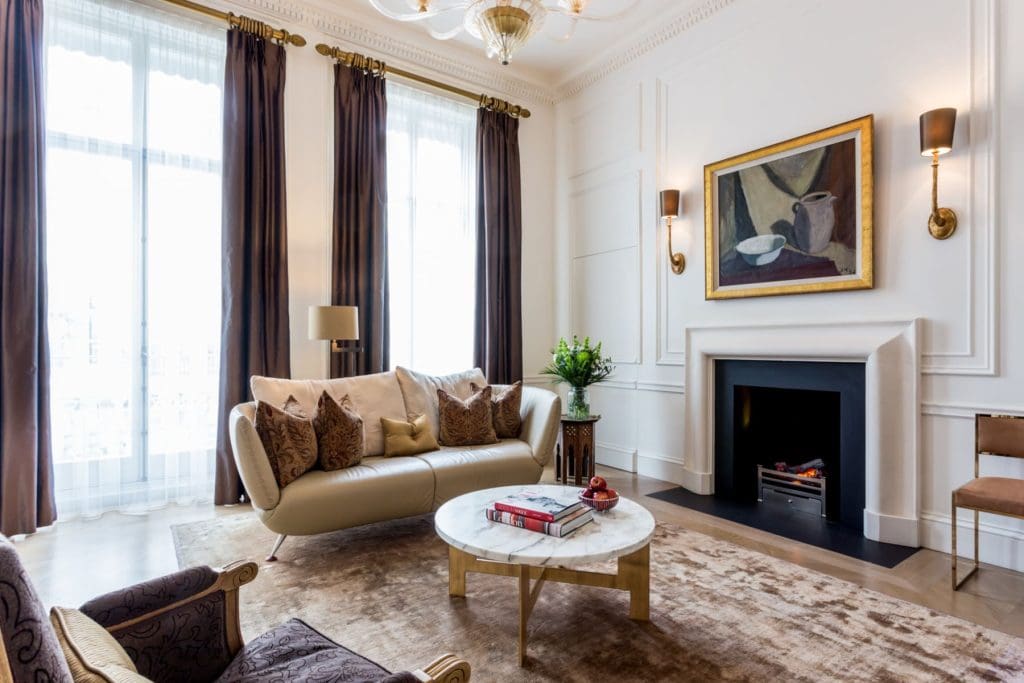
This was a very stylish room, with guest manager Thomas quick to highlight the design of the beautiful wallpaper (with matching cushions and curtains) which depicted delightful scenes probably from Chinese rural life in centuries past, featuring temples, boats, cottages and birds. “I feel it transports you to another world,” Thomas remarked, and we could definitely see what he meant.
The world we now found ourselves in, in Room 217, was a supremely comfortable one. Overhead there was a magnificent 1930s Murano glass chandelier, and the room was equipped with a superb king-sized bed, an armchair and footstool, and a long wooden table at the back with large plasma TV on the wall. Special mention for the spacious walk-in closet which housed two wardrobes, and also for the reading lights on either side of the bed (so many five-star hotels fail to provide them).
The stylish marbled bathroom had all the amenities you would require, with the highlight being a large shower space with an invigorating waterfall shower that was easy to operate (quite a few seem to delight in confusing you with their controls).
Drawing Room and K Bar
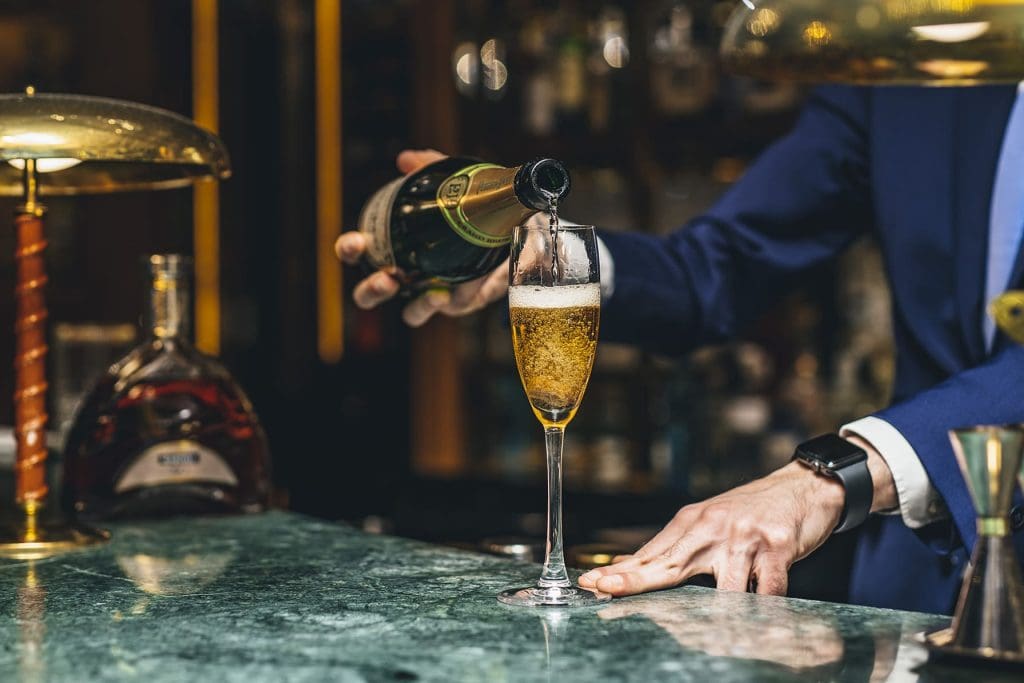
Back downstairs in reception we touched the impressive metal sculpture of an elephant for luck (a hotel custom) before exploring the range of rooms, including the elegantly furnished Drawing Room and the White Room. A friend joined us for an evening cocktail in the former, the real hub of the hotel, whose walls are adorned with a stunning, eclectic collection of paintings – some seascapes, some abstracts, some portraiture, some impressionist work, all of the highest quality.
Our drinks had come from the K Bar opposite, a dark, seductive oak-panelled room of period glamour, with subdued lighting and deep-buttoned, velvet-upholstered stools at the bar and comfortable wingback chairs and burgundy sofas by the walls. Only the eagle-eyed will spot the slice of history here with the bullet holes in the K Bar’s huge brass doors – inflicted by British soldiers, for the doors come from Dublin’s General Post Office, scene of the famous 1916 Easter Rising by Irish Republicans.
The Town House
We had breakfast, and also took a dinner, in the Town House, the hotel’s impressive sprawling restaurant venue, which consists of three interconnecting rooms all displaying evidence of the Regency townhouse in which they were once housed, featuring bay windows, working fireplaces, parquet floors and more original art. Breakfast was brought to the table, the highlights of which were the homemade Guinness bread and a top-class Eggs Benedict.
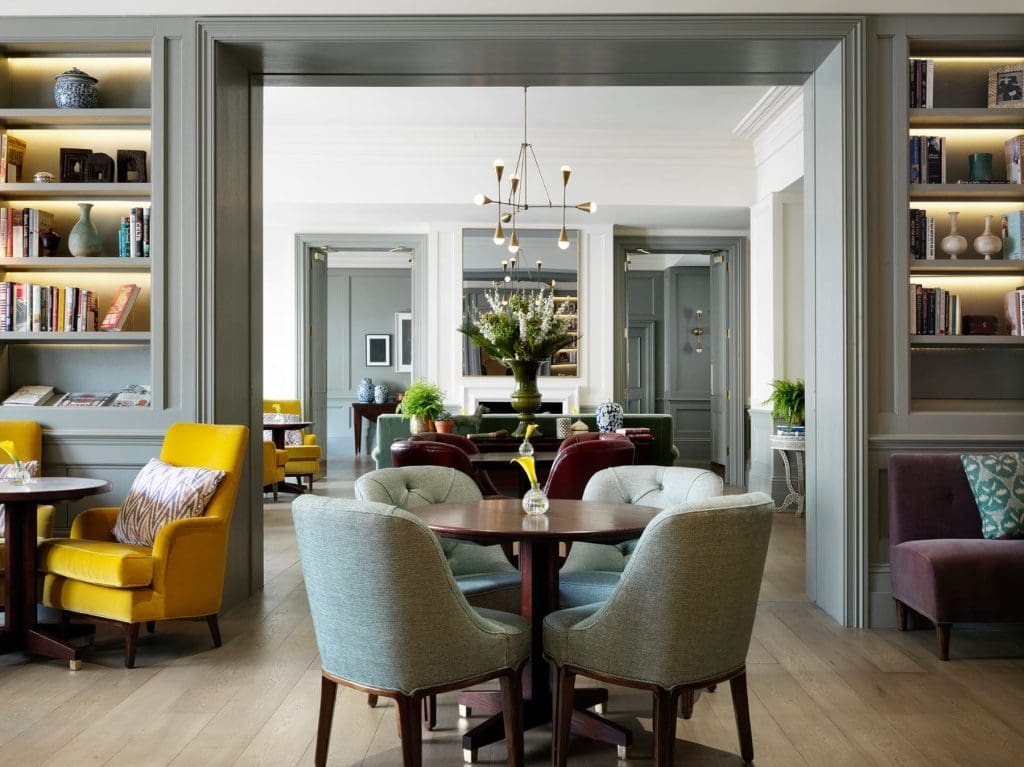
There were plenty of customers and a good atmosphere at dinner, where we enjoyed fillet of black cod, allied unusually but effectively with miso glaze, pak choy and jasmine rice, along with a more traditional wild mushroom risotto with black truffle. We had been left the most delicious complimentary bottle of white wine in our room – a fruity New Zealand Greywacke Sauvignon Blanc – and liked it so much that we requested it again with our meal.
Relaxed grandeur is probably the best way to describe the feel of The Kensington. Because of its location the hotel often links up with the nearby museums to provide special deals for guests, and we were the beneficiaries of one of those. Our package included tickets for one of the (if not the) most sought-after events in town, the Gabrielle Chanel exhibition at the V & A.
We took an eight-minute stroll to the V&A, past the magnificent yellow and red brick Victorian Gothic St Augustine’s Church, on to Cromwell Road and beyond the Natural History Museum, where hordes of excited schoolchildren had gathered.
Coco Chanel
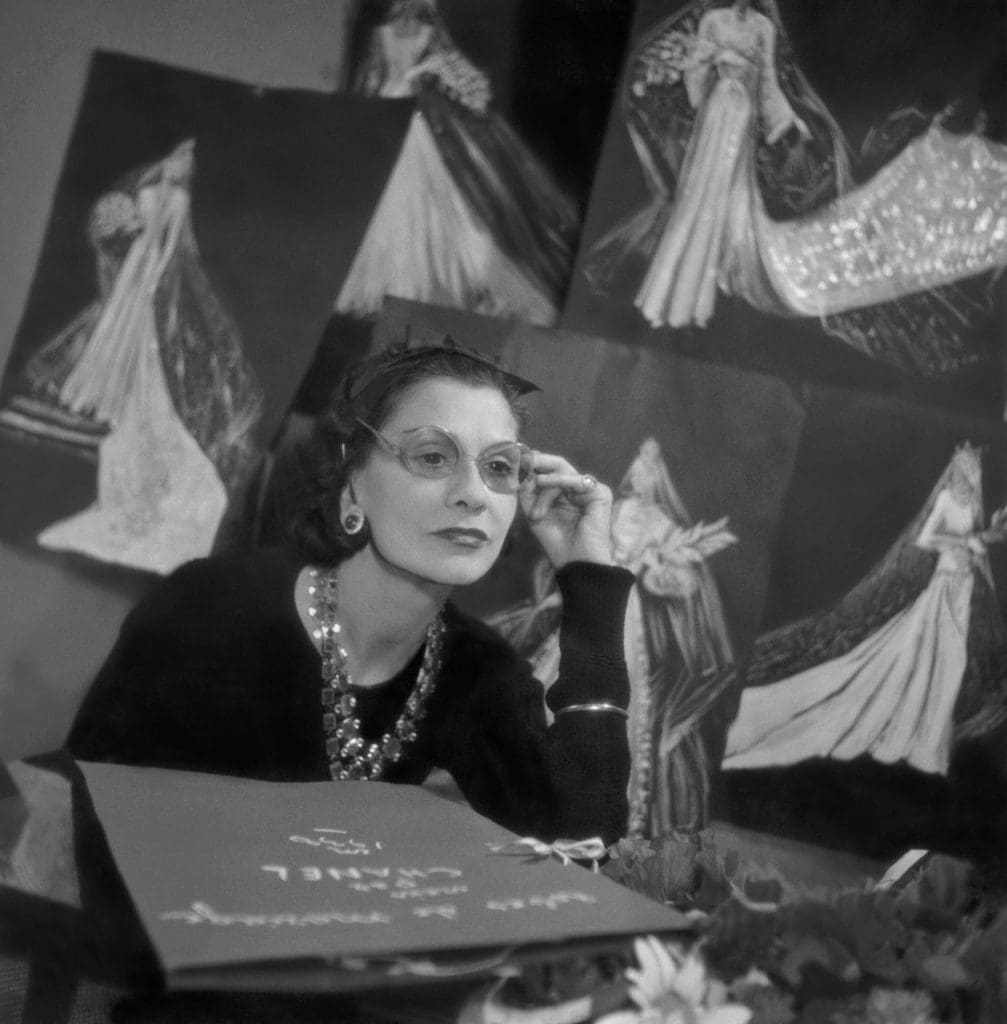
With more than 200 suits, dresses, hats and quilted handbags on show, not to mention scores of pieces of jewellery, cosmetics and fragrances, the Chanel exhibition is a truly comprehensive look at the pioneering designer, always known as ‘Coco’, who changed the look of women’s fashion in the 20th century.
The exhibition studiously charts her extraordinary life story. Born Gabrielle Bonheur Chanel in 1883 in Saumur in the Loire region of France, she was illegitimate and poor. Her father, an itinerant salesman, abandoned her to an orphanage when she was just 12 after her mother died of tuberculosis. There the nuns taught her to sew, and later, as a designer, she would always favour the beige, black and white colours of the nun’s habit.
At 18 she left the convent and was employed by her aunt in Moulins as a seamstress, also singing in clubs where she acquired the nickname ‘Coco’. At 20 she met a wealthy aristocrat and textile heir, Etienne Balsan, who introduced her into an upper-class circle for which she started designing elegant hats to be worn at racecourses. But it was her second major lover, the English industrialist and sportsman Arthur ‘Boy’ Capel, who helped put her on the road to fashion immortality.
Capel set up Chanel with her first (millinery) shop in Paris in 1910. Boutiques in Deauville and Biarritz followed – with the accent in these seaside towns on sports and swim wear – before, in 1918, she established her couture house at 31 Rue Cambon in Paris. Here she built her fashion empire, which would be pre-eminent for the next half a century.
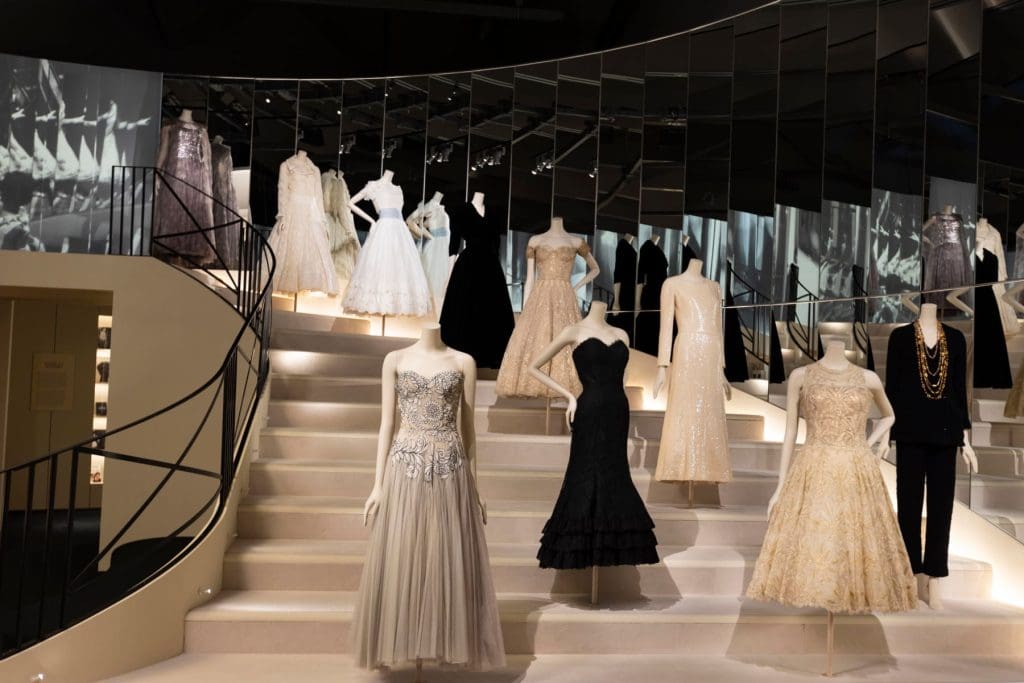
As the exhibition demonstrates, Chanel made clothes for active, independent women like herself. Challenging the haute couture of the day, they were practical yet stylish, designed for comfort, simplicity and ease of movement. “Always dress to make yourself feel young,” she stated as her philosophy. “This means being free and easy and unpretentious in your clothes. You have to breathe and move and sit without being conscious of what you’ve got on.”
Gabrielle Chanel Exhibition at the V&A
Amongst much else, the exhibition reminded us of the vast influence of Chanel’s ‘little black dress’. She recast black as a stylish wardrobe option, when previously it had been associated merely with service, shop assistants and mourning dress. In 1926 American Vogue declared her crepe de Chine day dress as a new type of uniform for all women, ‘the frock that all the world will wear’ and it was dubbed the ‘Ford of fashion’ after the popular black T-model car.
The show charts Chanel’s strong personal and professional links with Britain – which of course had started with her relationship with Arthur Capel. Her affair with another very wealthy man, the Duke of Westminster, saw her spend much time in the 1920s on country house estates and on grouse moors, and the tweeds and knitted jerseys she wore on those occasions would later be translated into designs for her own collections.
Winston Churchill and his son Randolph were good friends, and here we see photographs of the three of them hunting in France, and at the races in Ascot. It also shows a painting Churchill – a keen but able amateur – made of Chanel in 1928, capturing her in a relaxed outdoor pose with a pet dachshund.
Coco Chanel: Nazis, the Queen and Marilyn
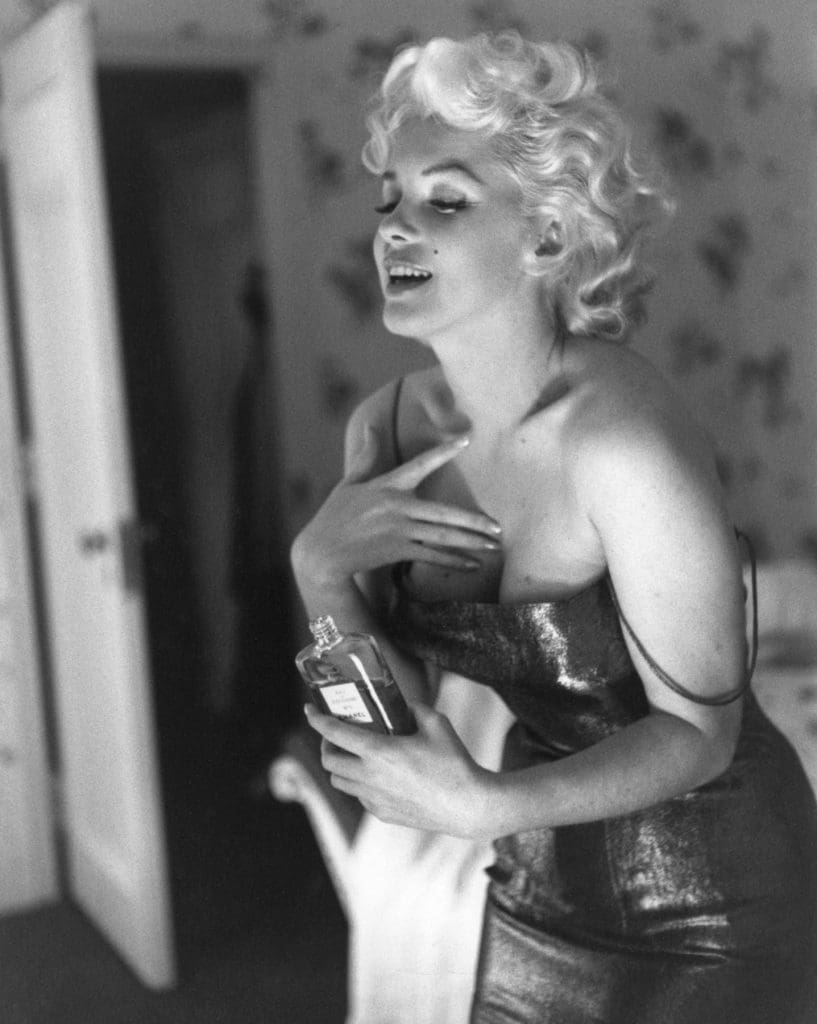
Chanel’s wartime record is somewhat murky to say the least. Holed up in The Ritz in Paris for much of the war, she took a Nazi officer named Hans Gunther von Dincklage as her lover. The majority of historians thus place her firmly in the collaborationist camp – although whether she was an active German agent or simply a ‘horizontal collaborator’ is fiercely disputed. There is also some contrary evidence that she worked for the French resistance. The exhibition doesn’t shirk the issue and attempts to outline some of the evidence either way.
If the clothes inevitably steal the show, there is much fascination with the exhibits of the squat bottles of her famous perfume. American soldiers are pictured queuing up to get free samples after they had liberated Paris in 1944, and we are reminded that the Queen was a fan, and that Marilyn Monroe, when asked what she wore to bed, replied coquettishly ‘Chanel No 5’.
The exhibition closes with a recreation of the famous mirrored staircase at Chanel’s HQ in Rue Cambon, with a sumptuous gown on every step, inevitably the most popular place for selfies and photographs. It had been a dazzling show, a fulsome tribute to a couturier whose simple, uncluttered, casual designs revolutionised the world of fashion – and society.
After the delights of a fashion extravaganza it was only a short stroll back to The Kensington for a welcoming cuppa in our cosy suite.
Christmas Break at The Kensington
For those contemplating a Christmas break in London (up to 8 January, 2024) the hotel is offering a special package “Christmas in Style” – the offer includes accommodation for two with full English £100 Harrods gift card and bottle of champagne.
The Kensington Hotel Doyle Collection
For more information about The Kensington, click here.
Images of the Gabrielle Chanel Exhibition courtesy and ©V&A Press Office. Images of The Kensington courtesy of The Doyle Collection.
